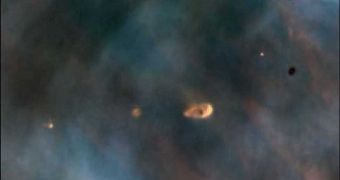According to the results of a new scientific investigation, it would appear that as many as 45 percent of all extrasolar planets confirmed or proposed thus far are part of the super-Earth class. These high numbers hint at an interesting formation mechanism, experts say.
They believe that super-Earths may in fact be the remnants of once-massive gas giants that somehow lost their mass. One possible mechanism we could use to explain this is that the gas surrounding the tough core was removed as the planets moved ever-closer to their parent stars.
Thus far, the NASA Kepler Telescope – which was developed specifically to find exoplanets – identified 1,235 planetary candidates, of which nearly a quarter are believed to be super-Earths. The exact figures will only become available once all findings are confirmed or infirmed.
Researchers at the University of Leicester in the United Kingdom, led by astronomer Sergei Nayakshin, now propose a process called tidal downsizing to explain how the change occurred. They say that many of the would-be gas giants never managed to accrete sufficient material to reach that stage.
This approach is different from core accretion, the usual theory experts apply to explaining how planets form. This idea holds that material from stellar protoplanetary disks can accrete in increasingly-large chunks, which come together and eventually form a planet.
According to the tidal downsizing theory, super-Earth-class planets form towards the outer fringes of their stellar systems, far away from the locations where we are observing them now. Massive lumps of gaps come together, in a process that would normally result in the formation of a gas giant.
However, this does not happen because extremely low temperatures allow the grain particles in the dust to contract and come together, forming large chunks that fall towards a common center of gravity. This is how the rocky, solid core appears in this class of planets.
“Once you have a core, it may build up an atmosphere around it. The atmosphere is dominated by hydrogen, but it is much more chemically-rich than the primordial dust material,” Nayakshin explains.
As a super-Earth grows larger and larger, so does its atmosphere. While this happens, the planet is pulled closer to its star, where the latter begins to consume the outer layers of the planetary atmosphere. This phenomenon leads to the characteristic appearance of super-Earth planets.
“The remaining core is pretty much a rocky planet, with a mass anywhere from almost zero to ten or so Earth masses. I like to think of the mechanisms as opposites. One is bottom up – core accretion – and the other is top down – tidal disruption,” Nayakshin concludes, quoted by Daily Galaxy.

 14 DAY TRIAL //
14 DAY TRIAL //